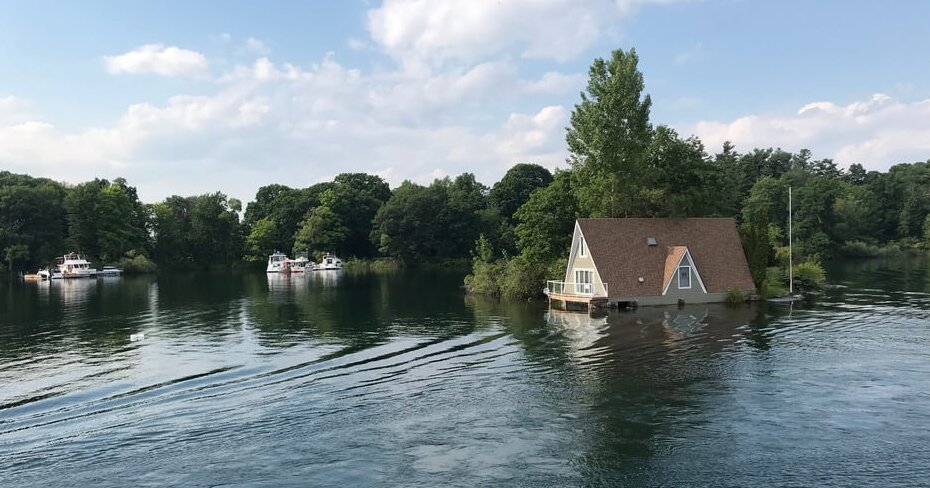Is flooding covered by home insurance?
By: Steven Brennan on May 13, 2025
Flood damage is one of the most commonly misunderstood gaps in home insurance, and many homeowners mistakenly assume they're protected when they’re not — leading to a stressful and expensive surprise if their basement is flooded.
While some policies may include coverage for sudden water damage from internal issues (sewer back-up), such as burst pipes or leaking appliances, they generally don’t include damage caused by water entering the home from outside (overland flooding).
To protect against flooding, homeowners can consider purchasing optional coverage for overland flooding or sewer backup, if available.
Over 1.5 million Canadian households are at high risk of flooding
Flooding has become the most common and costliest type of natural disaster in Canada.
Summer 2024 marks Canada’s costliest season of weather-related damage on record. Owing in large part to floods across Toronto and southern Ontario and Quebec, and hailstorms in Calgary, as well as wildfires in Jasper, the months of July and August alone racked up over $7 billion in insured damages, according to estimates from Catastrophe Indices and Quantification Inc. (CatIQ).
And the risk is growing, with more than 1.5 million Canadian households located in high flood risk areas.
As extreme weather events grow in frequency and intensity, more homes are facing flood risks that didn’t exist a generation ago.
Learn more: Rising worries: Nearly half of homeowners fear extreme weather damage
Sewer backup flooding protection
Sewer backup occurs when wastewater from the municipal sewer system flows back into your home through toilets, floor drains, or sinks. This type of flooding is considered ‘internal’, but it’s often triggered by external factors, especially in urban areas with aging infrastructure.
One common cause for sewer backup flooding is heavy rainfall. When too much rain hits too fast, the sewers can’t handle the volume of water, forcing excess contaminated water back into homes.
This could look like a sudden summer storm that overwhelms the municipal sewer system, causing water to pour up through your basement toilet and flood it, potentially damaging drywall, flooring, and furniture.
There are some relatively inexpensive steps you can take to protect against this type of flooding, including installing a backwater valve, which can prevent sewage from re-entering your pipes.
Additionally, a sump pump with a battery backup can help move water away from your foundation during storms. If you don’t already have them, you could consider installing water alarms in your basement, too.
Related: What if your neighbour causes water damage to your condo?
Overland flooding protection
Overland flooding is when water from outside your home enters through doors, basement windows or even cracks in the foundation. This can occur from heavy rainfall, melting snow or overflowing bodies of water.
For example, after a rapid spring thaw, melting snow may pool around the foundation of your home and leak into the basement through a small crack, damaging and potentially flooding the interior.
As with sewer backup, there are ways to protect yourself from overland flooding. A good place to start is with simple home and property maintenance, such as cleaning out gutters and eaves troughs, and pointing downspouts away from your home, ideally down a gentle slope.
It also helps to grade your yard so that water naturally flows away from the house, and keep nearby storm drains clear especially throughout winter.
What is inland flooding?
Inland flooding can sometimes overlap with overland flooding, but generally it refers to water that overflows from nearby rivers, lakes, or other bodies of water.
When optional flooding endorsements are available, they are usually referred to as overland flooding. However, some insurance providers will offer inland flooding, which in most cases covers the same areas, depending on how vulnerable you are to flooding.
There can be certain exclusions for homeowners living in designated flood zones, and every policy is different, so it’s always good to double check with your provider.
How to ensure you're covered when a flood strikes
As mentioned, in most cases, standard home insurance policies in Canada do not cover flooding.
To making sure that you’re protected, call your insurance provider and ask them specific questions about your coverage. Find out if your policy includes overland water protection and/or sewer backup coverage.
If you live near a river or lake, ask whether flooding from those sources is included or excluded – some homeowners who live in a high-risk area for flooding may not be able to get flood coverage at all.
In these cases, it’s worth checking for any government programs or municipal rebates that might be available. These could help you offset the cost of installing protective equipment, water meters or landscaping.
If you are eligible for flood insurance, the cost of coverage can vary widely between insurers, so it pays to shop around. Additionally, some insurers may offer bundled water protection options.
While Canadians may be at a greater risk of flooding now than ever before, the right precautions and insurance coverage can help homeowners reduce their risk and protect their property.
Read next: 4 common summer home insurance claims — and how to avoid making them
Save 20% on average on home insurance
Compare quotes from 50+ Canadian providers in 3 minutes.


